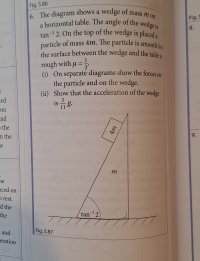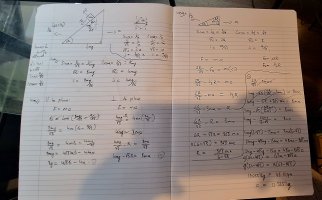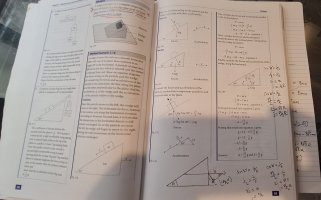
Here is the question, sorry I posted here, couldn't find applied maths area.
Here is my solution ..

This method has given me correct answers for other questions, I don't see where I go wrong here ... even taken friction into account..
For some background here is a worked example from the book :

This is similar question to the one I can't get correct, this is in fact easier as it has no friction.
